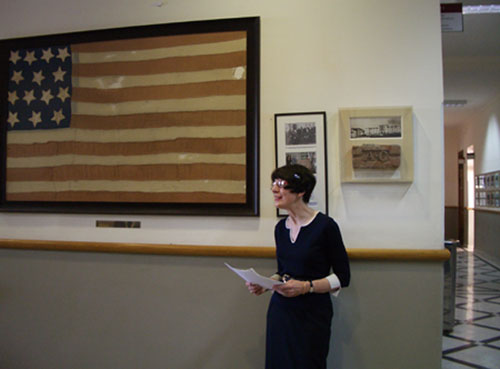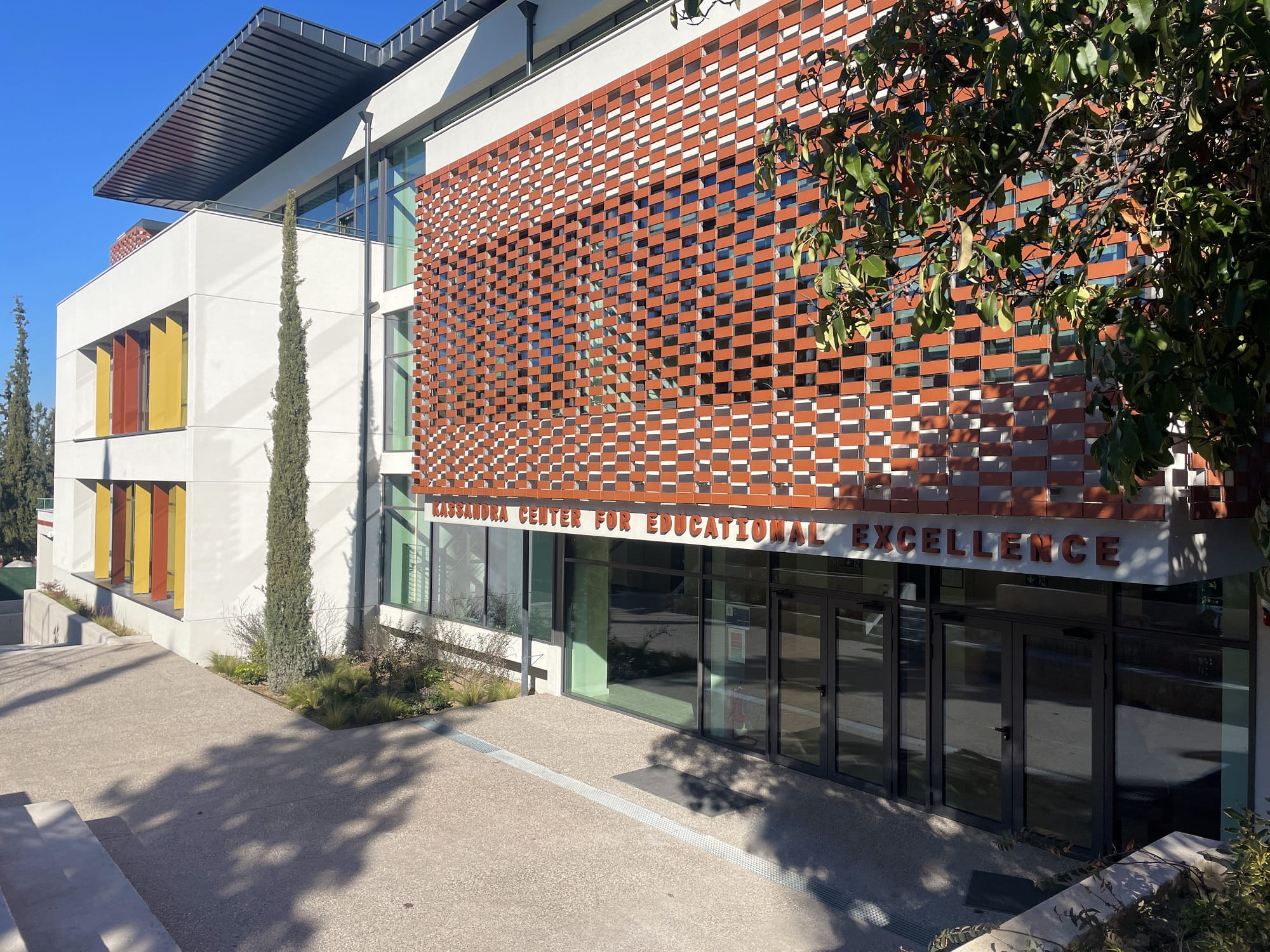Unveiling of the flag of Thyatira in Anatolia
 Dr. Constance Cryer Ecklund of Southern Connecticut State University presented the story behind the “Flag of Thyatira” during the flag’s unveiling ceremony that took place on October 3rd. The flag, donated to Anatolia by Dr. Ecklund, is of historical significance to Anatolia and now hangs in a place of honor in Anatolia’s Macedonia Hall. Bearing fourteen stars on a blue field, attached to six white and seven red strips of light wool cloth, the flag saved the lives of hundreds of Armenians in Thyatira, in October 1895. Christo Theologos Papadopoulos was born in Smyrna in 1864. He was orphaned at 11 and came to the attention of Dr. Ernest Riggs (grandfather of Anatolia’s third President), a prominent American missionary active in the Ottoman Empire. With Dr. Riggs’ help he attended Robert College in Constantinople and then its daughter institution, Anatolia College in Merzifon, where he studied Theology and Liberal Arts, graduating in 1893. In 1894 he married Erasmia Derebey, herself a graduate of the American Girls’ School of Bursa. They were to have six children together. One of the aims of Anatolia College in those times was to train “native laborers,” that is, non-American evangelical ministers, who would preach the Gospel and establish schools in cities and towns throughout Asia Minor, ministering chiefly to the Armenian and Greek Christian populations. After ordination, the Rev. Papadopoulos and his wife were sent to Ak Hissar (the Biblical Thyatira) in what is now Western Turkey. Contemporary accounts mention the “fresh impulse” and “large inspiration” of the work that was carried out there. But the storm clouds that had been gathering over the Armenian population of Asia Minor broke out in massacres in Sasun in 1894 and in Constantinople on September 30, 1895. Three days later, on October 3, the Sultan’s troops rode into Ak Hissar, beginning their killing in the town’s marketplace. Turkish friends of Rev. Papadopoulos had warned him of their coming. He summoned his parishioners to come and hide in his school. He then directed Erasmia and her two sisters to sew an American flag out of any red, white, and blue cloth available. Christo and the three women worked all night. By daybreak they had sewn together fourteen stars on a blue field, attached to six white and seven red strips of light wool cloth. By daybreak the flag was flying on the school’s flagpole. The Turkish troops arrived and demanded that the school doors be opened. Rev. Papadopoulos refused, saying, “This building and this village are under the special protection of the United States of America. Can’t you see the flag?” The commander looked up, hesitated, and whirled away with his troops. Later, the Armenians escaped into the countryside. The wave of attacks would reach Merzifon on November 15. After also serving the Christian communities in Fatsa, Ordu, and Samsun, on the Black Sea coast, Rev. Papadopoulos and his family emigrated to America in 1906-07, settling in Chicago, where he ministered to the city’s immigrants. The flag was often taken out and displayed at family gatherings. Rev. Christo Papadopoulos died in 1922, Erasmia in 1942. The flag passed to a daughter as the family began to lose close touch with its history. At one point the flag was thought to have been thrown away, only to be discovered in an attic some years later and given to a Papadopoulos granddaughter, Dr. Constance Cryer Ecklund, who was trying to recover her heritage. She wanted to find a safe place for the flag, and a place where it would be understood. She chose the school that had given her grandfather his vocation, Anatolia College. It was put on permanent display in Macedonia Hall in October, 2007. |







